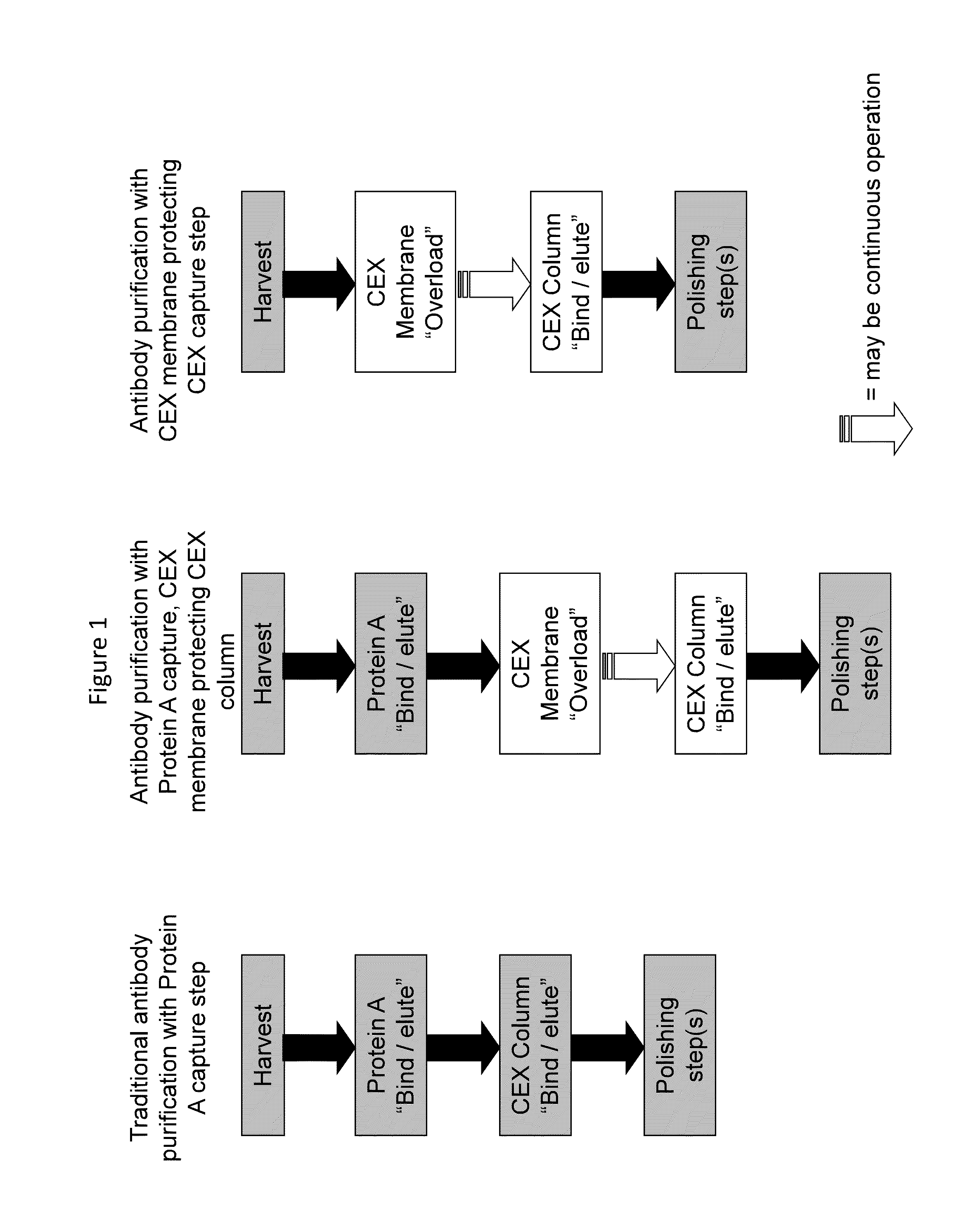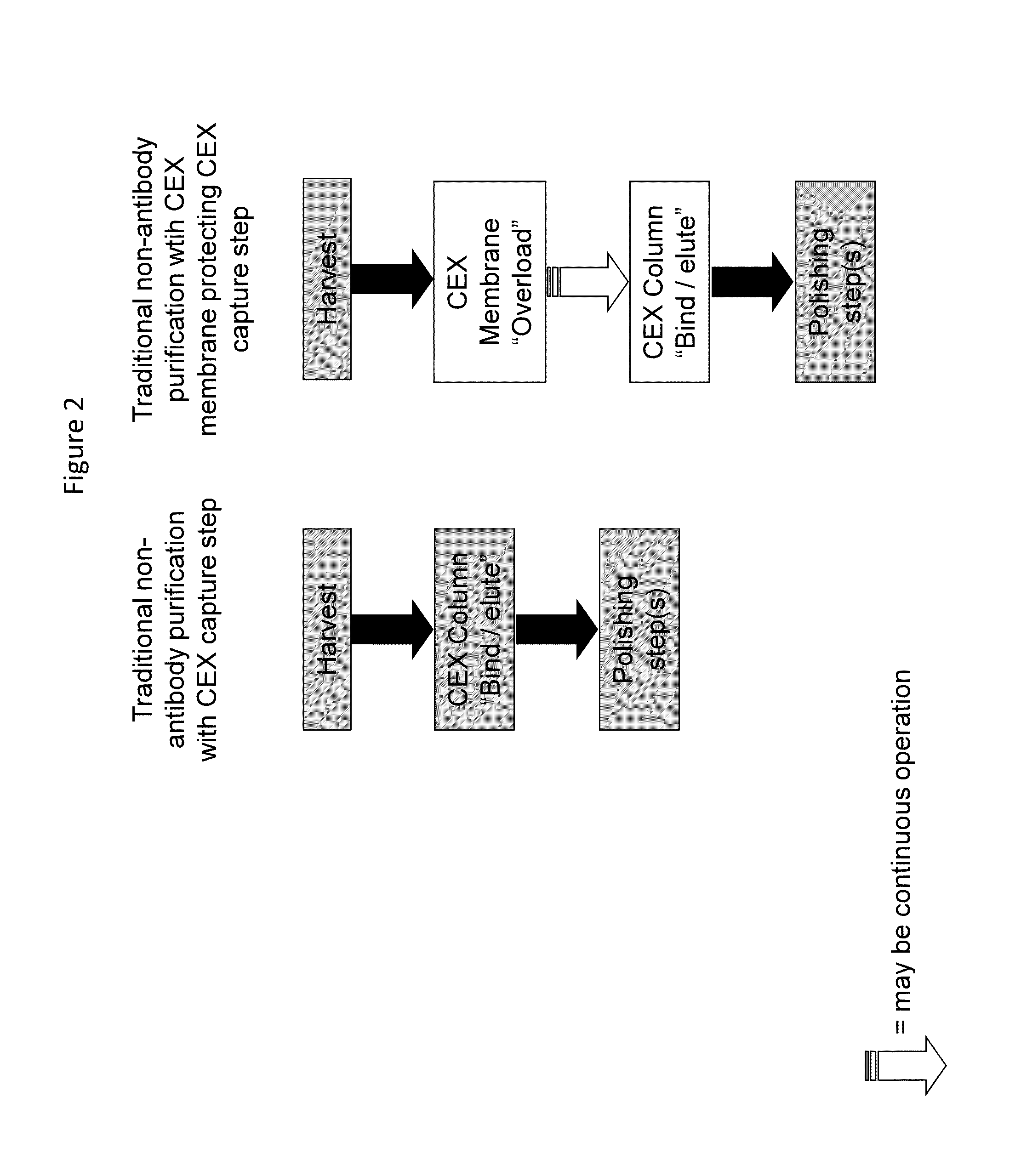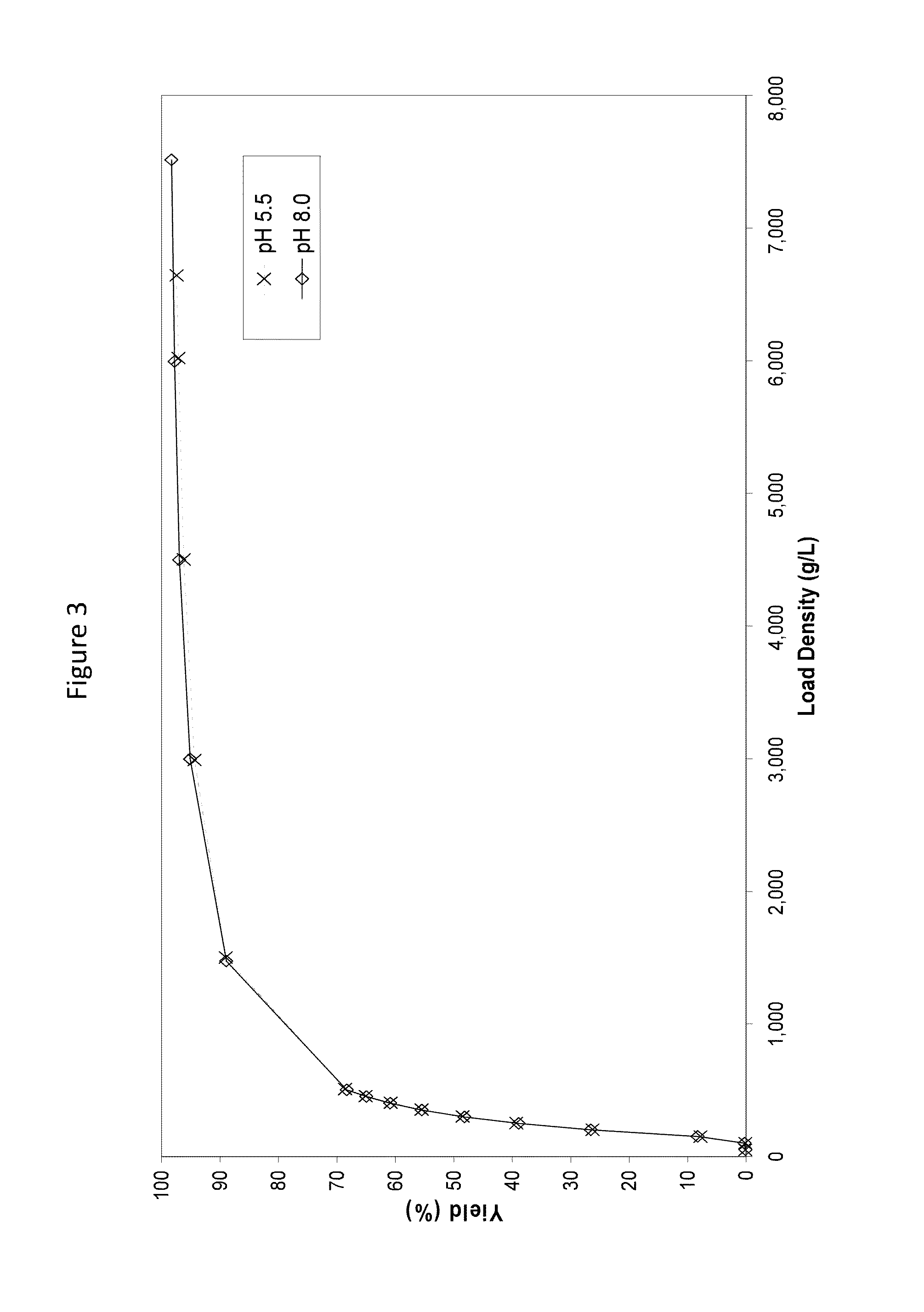Ion exchange membrane chromatography
a chromatography and membrane technology, applied in the field of protein purification, can solve the problems of difficult removal of subcellular fragments, difficult use as human therapeutics, and difficult economic purification of proteins, and achieve the effects of enhancing the charge of polypeptides, low ionic strength, and enhancing efficiency of downstream chromatography steps
- Summary
- Abstract
- Description
- Claims
- Application Information
AI Technical Summary
Benefits of technology
Problems solved by technology
Method used
Image
Examples
example 1
Introduction
[0128]This study focuses on the purification of monoclonal antibodies using ion exchange membranes in competitive adsorption mode to enhance the efficiency of downstream columns. Since membranes operating in competitive adsorption mode bind many impurities more strongly than monoclonal antibodies or other polypeptides of interest, the membrane effectively removes impurities that can have a detrimental effect on a similarly charged, downstream column.
[0129]This approach is counter-intuitive to many purification processes which try to eliminate redundant cation exchange or anion exchange purification steps. In this application, a redundant membrane prior to a downstream column can enhance the performance of the column such that the overall process is more efficient.
[0130]One recombinant DNA derived mAb, one recombinant DNA derived one-armed antibody, and one recombinant DNA derived polypeptide were selected for analysis based on their molecular variety. The mAb was produce...
PUM
| Property | Measurement | Unit |
|---|---|---|
| pore size | aaaaa | aaaaa |
| conductivity | aaaaa | aaaaa |
| conductivity | aaaaa | aaaaa |
Abstract
Description
Claims
Application Information
 Login to View More
Login to View More - R&D
- Intellectual Property
- Life Sciences
- Materials
- Tech Scout
- Unparalleled Data Quality
- Higher Quality Content
- 60% Fewer Hallucinations
Browse by: Latest US Patents, China's latest patents, Technical Efficacy Thesaurus, Application Domain, Technology Topic, Popular Technical Reports.
© 2025 PatSnap. All rights reserved.Legal|Privacy policy|Modern Slavery Act Transparency Statement|Sitemap|About US| Contact US: help@patsnap.com



